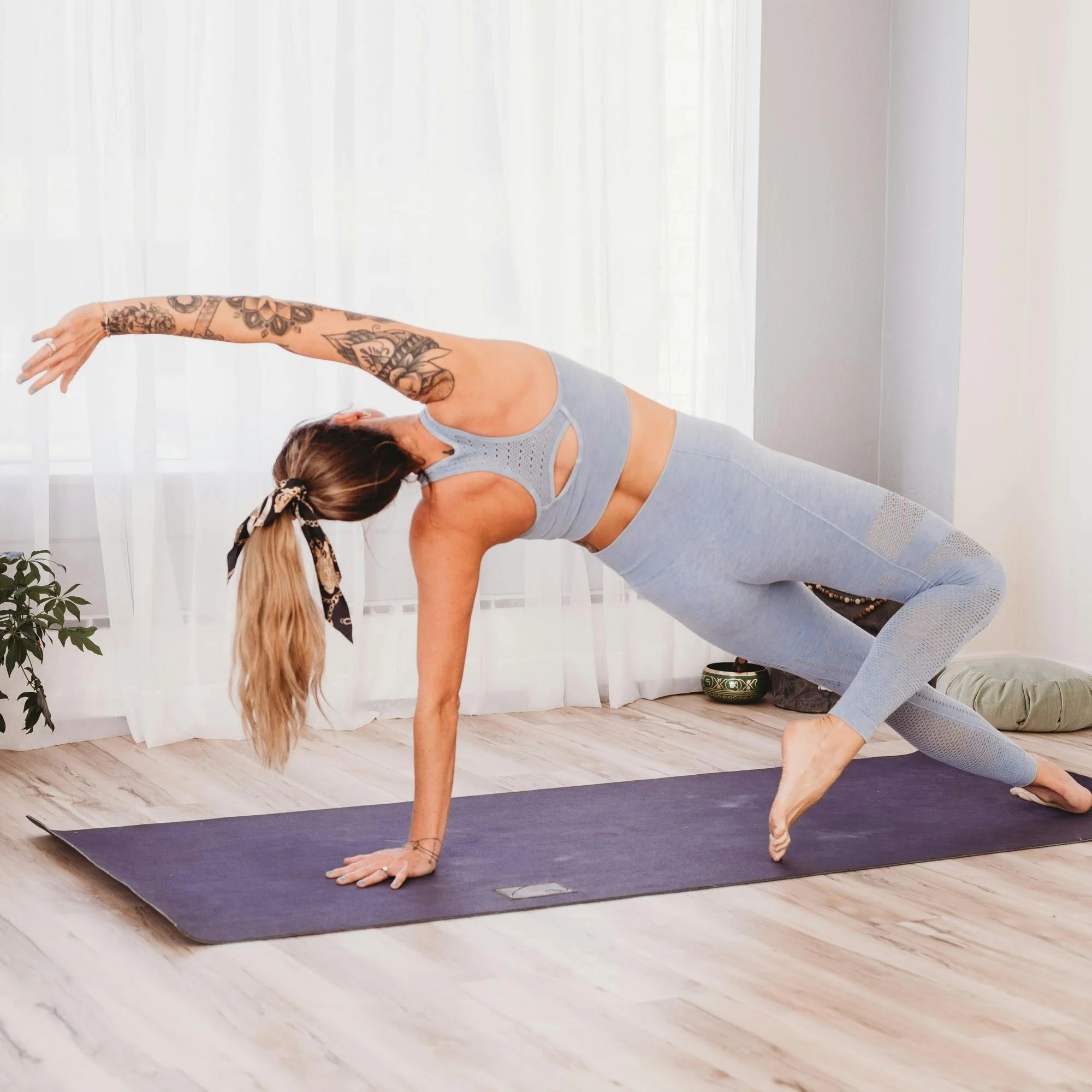
You’re likely started more workout routines than you can count, and I’m guessing most of them lasted about as long as your New Year’s resolutions—maybe three weeks if you’re fortunate. Maintaining a consistent exercise routine isn’t about having superhuman willpower or suddenly becoming a fitness fanatic overnight. It’s actually about understanding the simple psychology behind habit formation, and honestly, there are fourteen specific strategies that can transform your relationship with exercise completely.
Key Takeaways
- Start with 10-minute workouts and build gradually to make exercise feel automatic and sustainable.
- Find a workout partner and establish reward systems to maintain accountability and motivation.
- Track progress through fitness assessments, photos, and data to create momentum and celebrate wins.
- Design flexible weekly plans with varied activities to accommodate life’s disruptions and prevent boredom.
- Work with a certified trainer for proper form and customized programming to prevent injuries.
Start With Small, Manageable Steps
One of the biggest mistakes I made when starting my fitness journey was thinking I could jump from couch potato to marathon runner in two weeks – spoiler alert, it didn’t work. Your first step should be ridiculously simple. I’m talking 10-minute walks, not hour-long gym sessions that’ll leave you crawling to your car.
When you’re building your exercise routine, think baby steps, not giant leaps. Start with something you can’t possibly fail at – maybe it’s walking around your block or doing five push-ups. This approach prevents the burnout that kills most fitness routines within three weeks. Once you’ve nailed your modest goal for two weeks straight, then you can add another five minutes or two more exercises.
Remember that simple tasks like basic movements typically become habits more quickly than complex behaviors, so starting small gives your brain the best chance to make exercise feel automatic over time.
Find a Workout Partner for Accountability

After you’ve mastered those small steps and built some momentum, you’ll probably hit that inevitable wall where your motivation starts wavering – trust me, I’ve been there more times than I’d like to admit. That’s when finding a workout partner becomes your secret weapon to help you stick to your exercise program.
| Solo Workouts | Partner Workouts |
|---|---|
| Easy to skip sessions | Harder to bail on someone |
| Only accountable to yourself | Mutual accountability kicks in |
| Motivation comes and goes | Consistent external motivation |
| Boring repetitive routines | Fun, competitive atmosphere |
Having someone committed to your fitness goals transforms everything. Your exercise sessions become social events you actually look forward to, and your workout routine stays consistent because disappointing yourself is easier than disappointing a friend. Plus, research proves you’ll push harder during exercise when someone’s watching – it’s basic human psychology working in your favor. Consider joining a dance class together or trying partner activities like tandem cycling to keep your workouts fresh and engaging.
Set Up a Reward System for Milestones
While accountability partners work wonders, I’ve discovered that dangling a carrot in front of yourself – metaphorically speaking, of course – can be just as powerful for staying motivated. Setting up a reward system will help keep your fitness routine exciting and give you something concrete to chase.
I establish specific milestones like completing my first 5K or deadlifting my bodyweight, then reward myself with experiences I genuinely want – concert tickets, a massage, or new workout gear. The key is choosing rewards that don’t sabotage your progress. When I was losing weight, I’d reward myself with a spa day instead of pizza.
This approach works because you’re focusing on measurable accomplishments rather than just appearance. Those tangible goals keep you laser-focused on actual progress. Consider treating yourself to productivity boosters like wireless headphones for your workout playlist or self-care items that support your wellness journey.
Make Exercise Entertainment Time

Since I spend roughly 45 minutes at the gym four times a week, I figured out how to turn that “dead time” into my favorite part of the day – entertainment hour. I keep a set playlist of podcasts and audiobooks that I only listen to during physical activity, which gives me something that’s genuinely exciting to look forward to.
Different types of content work for different workouts – true crime podcasts during cardio, motivational audiobooks during strength training. These tips to help you stay consistent work because you’re getting at least 150 minutes of exercise plus entertainment weekly.
The amount of time flies by when you’re absorbed in a good story, and it’ll help you keep things interesting instead of dreading those boring days a week at the gym. For workouts that require more concentration, consider using noise-canceling headphones to block out gym distractions and create your ideal audio environment.
Track Your Progress and Share Results
You know what’s funny about working out? You can sweat for three weeks straight and still feel like you’re getting nowhere, but when you start tracking your progress with fitness apps, suddenly those small wins become crystal clear.
I’ve found that logging my workouts and sharing my victories with friends creates this weird snowball effect where each gym session builds on the last one. Whether you’re posting that post-workout selfie on Instagram or texting your buddy about crushing your personal record, turning your fitness journey into a shared experience keeps you accountable and motivated to show up tomorrow.
Tools like Buffer can help you maintain a consistent social media presence by scheduling your workout achievements and progress photos in advance, ensuring your fitness journey stays visible to your support network even on your busiest days.
Use Fitness Apps
Fitness apps have completely transformed how I track my workouts, and honestly, they’ve become my secret weapon for staying consistent. These digital powerhouses turn your phone into a personal trainer, nutritionist, and cheerleader all rolled into one sleek package.
- Exercise science integration – You’ll get evidence-based workouts targeting specific muscle groups, ensuring your weight training and strength training sessions deliver maximum health benefits
- Progress visualization – Watch your improvements unfold through detailed analytics and performance charts that keep you motivated
- Social accountability – Share your victories with friends and family who’ll cheer you on during those “I-don’t-want-to-workout” moments
- Gamification rewards – Earn badges, climb leaderboards, and uncover achievements that make sweating feel surprisingly addictive
Trust me, once you start using these apps, you’ll wonder how you ever worked out without them.
Share With Others
Apps alone won’t carry you through those inevitable rough patches when motivation hits rock bottom, but sharing your fitness journey with others creates an unstoppable support system that’ll keep you moving. When you post those sweaty post-workout selfies or share your weight loss victories in group chats, you’re building a network of champions who’ll celebrate every milestone with you.
Find yourself an accountability partner who’ll call you out when you’re making excuses about skipping leg day again. Trust me, having someone ask “Did you work out today?” hits different than lying to yourself in the mirror. Share your progress photos, workout videos, and even your epic fails – because nothing motivates like knowing others are watching your transformation unfold.
Build Momentum Daily
When momentum starts building in your fitness routine, that’s when the magic happens – and tracking your daily progress is the fuel that keeps that engine running. Recording your workouts transforms abstract effort into concrete victories you can actually see.
Log immediately after workouts – Write down reps, duration, or distance while you’re still sweating
Use photos for visual proof – Take weekly progress shots to see changes your mirror might miss
Share wins with your circle – Text your workout buddy or post that PR on social media
Celebrate micro-victories – Did five more push-ups than last week? That deserves recognition
This simple documentation creates an addictive cycle of achievement that’ll keep you coming back for more.
Choose Activities That Fit Your Lifestyle

Your workout routine won’t stick if it clashes with your real life, so you need to pick activities that actually work with your schedule and resources.
If you’ve only got 20 minutes before work, don’t plan hour-long gym sessions that’ll leave you scrambling and stressed every morning. Instead, focus on adapting your exercises to fit the time you actually have available, and choose equipment that’s easy to access whether you’re at home, work, or traveling.
Consider joining the early morning exercise crowd by establishing a 5 AM routine that gives you quiet, uninterrupted time to focus on your fitness before the day’s demands take over.
Adapt to Available Time
The biggest game-changer in my fitness journey wasn’t finding the perfect workout plan, it was finally accepting that I’d exactly 23 minutes on Tuesday mornings and maybe 35 minutes on weekends. That first week of realistic scheduling changed everything.
You’ve got to work with what you have, not against it. Here’s how I dominate my unpredictable schedule:
- 10-minute power sessions – Quick HIIT bursts that torch calories faster than hour-long gym sessions
- Lunch break walks – Turn your 30-minute break into movement time
- Morning micro-workouts – Five minutes of bodyweight exercises before coffee
- Weekend warrior sessions – Longer workouts when time allows
Stop making excuses about perfect timing. Champions adapt, conquer constraints, and get results regardless.
Use Accessible Equipment
Smart timing means nothing if you’re stuck waiting for that fancy gym membership or dreaming about a home setup that costs more than your car payment. I’ve learned that a $15 resistance band pack delivers more punch than my neighbor’s $3,000 home gym that’s now a glorified clothing rack.
You don’t need Instagram-worthy equipment to crush your goals. Bodyweight exercises, resistance bands, and a single kettlebell can demolish any muscle group you’re targeting. I’ve maintained my strength for two years using just bands and a 35-pound kettlebell from a garage sale.
The key is choosing gear that travels with you, fits in small spaces, and actually gets used daily.
Practice Self-Compassion When You Miss Workouts
Missing workouts happens to everyone, and I learned this lesson the hard way after spending three days beating myself up for skipping the gym. Instead of diving into ice cream and self-pity, I discovered that practicing self-compassion actually gets you back on track faster.
Self-compassion beats self-criticism every time – it’s the fastest way back to your fitness routine after missing workouts.
Here’s how to treat yourself with kindness when you miss workouts:
- Acknowledge the setback without judgment – Say “I missed today” instead of “I’m a failure”
- Talk to yourself like you’d comfort a friend – You wouldn’t destroy your buddy for skipping once
- Reframe it as a temporary break – One missed day doesn’t erase weeks of progress
- Focus on your next opportunity – Ask “When can I work out next?” instead of dwelling
Research proves self-compassionate people bounce back quicker than harsh self-critics. Remember that small steps toward self-care and forgiveness can create significant positive changes in your fitness journey.
Measure Your Current Fitness Level
Most people jump into workout routines without knowing where they actually stand fitness-wise, which is like trying to navigate without a map. You’ll make better progress when you establish your baseline first, though it’s not exactly medical advice – just common sense.
Start by recording your pulse before and after walking one mile. Time yourself too, because knowing whether you’re crawling or cruising matters. Can’t handle a mile? No judgment – we’ve all been there.
Next, test your upper body strength with pushups. Modified versions count, so don’t feel defeated if you’re starting with wall pushups. Check your flexibility by evaluating your range of motion in major joints like hips and shoulders. Finally, measure your waist circumference and calculate your BMI for body composition insights.
Remember that establishing a solid fitness foundation should include waking up feeling refreshed most days, as proper recovery is just as important as the workouts themselves.
Design a Realistic Weekly Exercise Plan
Three workout sessions per week might sound manageable until you realize you’ve scheduled them all for Monday because that’s when motivation peaks.
Here’s how to design a weekly plan that actually works:
- Block specific days and times – Tuesday 6 AM, Thursday 7 PM, Saturday 10 AM. Write them down like important meetings.
- Mix your exercise types – Combine cardio, strength training, and stretching to avoid boredom and target different fitness areas.
- Start with 2-3 times a week – Don’t jump straight into daily workouts. Build consistency first, then gradually increase intensity.
- Build in flexibility – Life happens, so have backup plans when your scheduled workout gets derailed.
Morning workouts can be particularly effective since moving your body early releases endorphins and sets a powerful tone of self-care for the entire day.
Review your plan monthly and adjust as needed to keep it realistic.
Focus on Internal Motivation Over External Pressure
Chasing after that perfect beach body or trying to impress your ex at the high school reunion might get you through the first two weeks, but it won’t carry you through month six when the initial excitement wears off. You need to dig deeper and find what truly drives you from within.
I’ve learned that exercising because it makes me feel energized beats working out just to look good in photos. When you focus on how movement improves your mood, sleep, and confidence, you’re building sustainable habits. Sure, external goals seem powerful at first, but they’re like sugar rushes – quick energy that crashes fast.
Start asking yourself: What feels good about this workout? How does your body feel afterward? That internal satisfaction becomes your most reliable fuel. This approach aligns with developing emotional intelligence, which helps you recognize and understand your genuine motivations rather than getting caught up in external validation.
Schedule Regular Fitness Assessments
You know that feeling when you’re convinced you’re getting stronger, but your jeans still feel the same? That’s exactly why you need regular fitness assessments every 6-12 weeks. These aren’t just fancy gym tests – they’re your personal progress report cards that’ll keep you motivated and on track.
Your jeans might lie to you, but fitness assessments every 6-12 weeks tell the truth about your real progress.
Here’s what you should measure:
- Body composition – actual muscle vs. fat percentages
- Cardiovascular fitness – how your heart’s handling the workload
- Muscular strength – those gains you’ve been chasing
- Flexibility – because touching your toes shouldn’t feel impossible
These assessments give you cold, hard data instead of relying on how you feel that day. They’ll catch plateaus before you get discouraged and help you celebrate real wins you might’ve missed otherwise.
Build Variety Into Your Routine
You know that feeling when your workout becomes as predictable as your morning coffee routine, and you’re basically going through the motions like a fitness zombie? Mixing different exercise types isn’t just about preventing boredom—it’s about keeping your muscles guessing and your mind engaged, because let’s face it, doing the same chest press for three months straight makes you want to fake an injury.
Whether you’re swapping dumbbells for kettlebells, adding some cable work, or throwing in bodyweight exercises, variety is the secret sauce that transforms your “ugh, gym again” attitude into genuine excitement.
Mix Different Exercise Types
The secret to sticking with your workout routine isn’t finding the perfect exercise—it’s mixing things up so you don’t get bored out of your mind. Trust me, doing the same bicep curls for three months straight will make you want to quit faster than a bad first date.
- Rotate your cardio weekly – Monday’s treadmill becomes Wednesday’s bike ride and Friday’s swimming session
- Alternate strength days – Free weights one day, resistance bands the next, then bodyweight exercises
- Mix intensity levels – High-intensity intervals followed by gentle yoga recovery days
- Try something completely new monthly – Martial arts, rock climbing, or dance classes
Your muscles will thank you for the variety, and you’ll actually look forward to working out.
Prevent Workout Boredom
While mixing different exercise types gives you a solid foundation, preventing workout boredom requires a deeper strategy that goes beyond just switching from weights to cardio. You’ve got to shake things up regularly, or you’ll find yourself mindlessly going through the motions like a gym zombie.
| Equipment Rotation | Activity Variety | Format Changes |
|---|---|---|
| Machines Week 1 | Rock climbing monthly | Circuit training |
| Free weights Week 2 | Swimming sessions | HIIT intervals |
| Bodyweight Week 3 | Dance classes | Tempo variations |
| Mixed Week 4 | Outdoor activities | Strength circuits |
I rotate my workout format every two weeks, adjusting intensity levels and rest periods to keep my body guessing. Trust me, your muscles will thank you for the constant surprises, and you’ll actually look forward to your next session.
Set Realistic Expectations for Progress
Setting yourself up for disappointment isn’t exactly the motivational boost you’re looking for when starting a workout routine. You’ll crush your momentum faster than dropping a dumbbell on your toe if you expect dramatic transformations overnight.
Aim for 1-2 pounds of weight loss per week instead of fantasizing about dropping 20 pounds in a month. Focus on adding 5-10 pounds to your lifts every two weeks rather than expecting to bench press like a powerlifter immediately. Celebrate small wins like completing three workouts this week instead of demanding perfection from day one. Plan for 6-8 weeks to see noticeable changes because your body needs time to adapt and respond.
Patience beats burnout every single time.
Master Proper Form and Technique

You’ll want to start with basic movements like squats, push-ups, and planks before jumping into complex exercises that’ll leave you confused and potentially injured. Focus on doing 8-12 quality repetitions with perfect form rather than cranking out 25 sloppy ones that make you look like you’re having a wrestling match with gravity.
Consider working with a trainer for 2-3 sessions, even if it costs you $150-200, because they’ll catch those sneaky form mistakes that’ll bite you later.
Start With Basic Movements
Building your workout routine is like learning to drive—you don’t start with a Formula 1 race car, you begin with basic parallel parking in your mom’s minivan.
Your body craves mastery, and that starts with fundamental movements. You’ll build unstoppable strength by focusing on these basics:
- Squats – Master sitting back and standing up with perfect alignment
- Pushups – Develop upper body power from your knees or toes
- Lunges – Build single-leg stability and explosive leg strength
- Planks – Create an unbreakable core foundation
I’ve watched countless people skip these fundamentals, only to plateau within months. You’re smarter than that. Spend 2-3 weeks perfecting these patterns before adding weight or complexity. Your future self will thank you when you’re crushing advanced movements.
Focus on Quality Repetitions
Perfect form beats ego lifting every single time, and I learned this the hard way after tweaking my back trying to impress strangers at the gym. You’ll build real strength by slowing down and focusing on controlled movements rather than throwing weight around like a caveman.
I started recording myself doing squats with my phone, and wow, my form was terrible. Those slow, deliberate reps create way more muscle activation than fast, sloppy movements.
| Poor Form | Good Form | Result |
|---|---|---|
| Fast, jerky reps | Slow, controlled movement | Better muscle activation |
| Heavy weight, bad technique | Lighter weight, perfect form | Injury prevention |
| Ego-driven lifting | Quality-focused training | Long-term strength gains |
| No self-assessment | Video feedback | Improved technique |
Quality repetitions cement proper movement patterns that’ll serve you for years.
Seek Professional Guidance
Sometimes you need to swallow your pride and admit you don’t know everything about lifting weights, and that’s exactly what I did after six months of YouTube University left me with a nagging shoulder pain. Investing $200 in three sessions with a certified trainer was the smartest decision I made for my lifting journey.
Here’s what proper guidance delivers:
- Form corrections that prevent injuries before they happen
- Muscle targeting that actually hits what you’re trying to work
- Customized programming that matches your current strength level
- Ongoing adjustments that keep your technique sharp over months
You’ll maximize every rep’s effectiveness while building sustainable habits that last years, not weeks.
Conclusion
You’ve got all the tools now, so there’s no excuse for giving up after three days like last time. Start with those 10-minute walks, grab a buddy who won’t let you slack off, and celebrate small wins along the way. Mix things up when you’re bored, track your progress, and don’t expect miracles overnight. You’ll actually stick with it this time – I promise it’s easier than you think.
Comments
-
Pingback: 25 Healthy Habits to Start This Week





Pingback: 8 Workouts That Double as Happiness Boosters